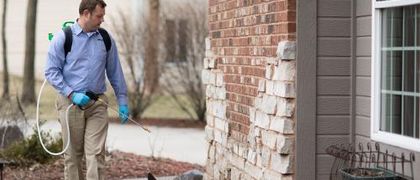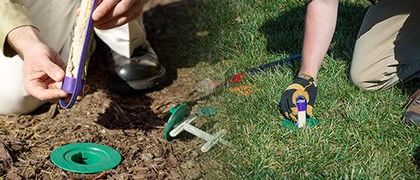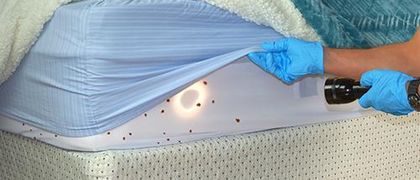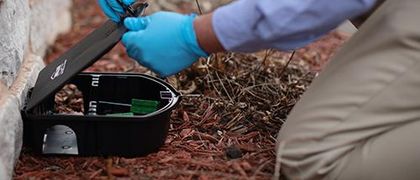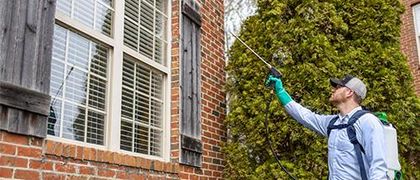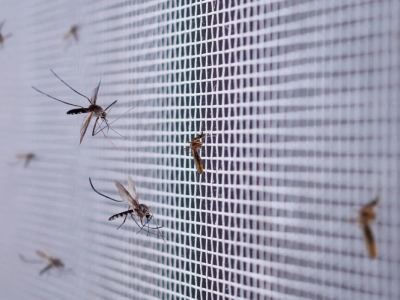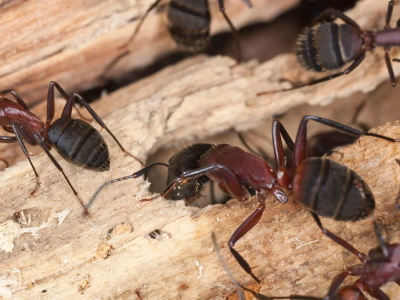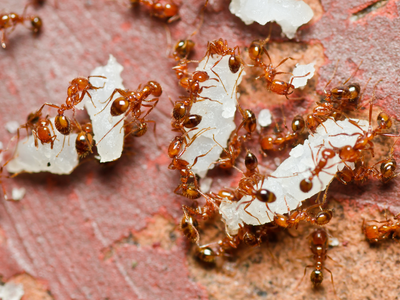What do bed bugs look like?
- Size: 5-7 mm
- Color: Brown to reddish-brown
- Body Structure: Head, thorax, abdomen, antennae, and six legs
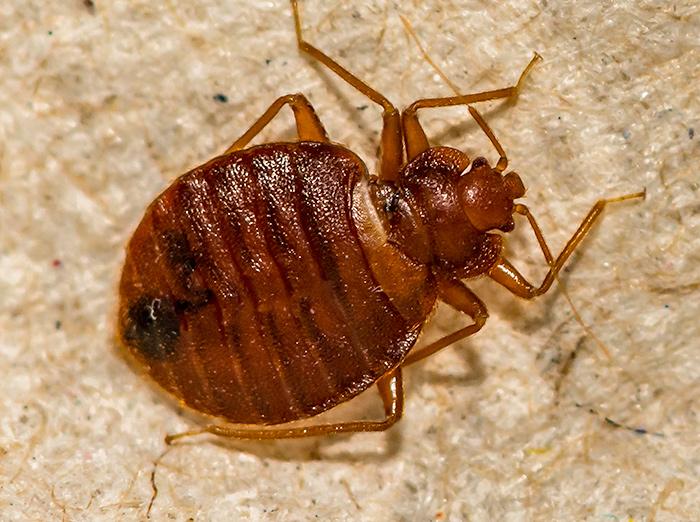
Characteristics of bed bugs
Bed bugs feed predominantly on human blood, typically biting during the night, when they become most active. A bed bug will travel as far as 20 feet to reach a host and a single feeding can take up to 12 minutes. Bed bugs secrete an odor through their glands that is described as both musty and sweet. In addition to pale-yellow molted exoskeletons, bed bugs may also leave reddish or rust-looking spots in their hiding places. These are remnants of previous meals and crushed bugs.
When are bed bugs most active?
How fast do bed bugs reproduce?
Bed bugs develop from egg to adult in six stages. Females can lay 3-5 pinhead-size, pearl-white-colored eggs per day. When the eggs hatch 6-10 days later, the young bed bugs are called nymphs and appear to be translucent or yellowish-white. To reach adulthood, the bugs must have a blood meal and will progress through 5 nymph stages over a period of about 6 weeks, molting between each stage. Adults feed every 5-10 days, though they can survive up to a year depending on temperature and humidity, without being fed.
What do bed bugs eat?
Bed bugs only feed on the blood of humans and warm-blooded animals.
Are bed bugs dangerous?
Bed bugs feed on blood obtained through biting their host. The bug uses its beak to inject an anesthetic that keeps the victim from feeling the bite and an anticoagulant that encourages blood flow. A single bug may bite multiple times. Bed bugs usually attack during sleep, feasting on skin that is exposed such as arms, legs, face, neck, hands, and shoulders.
Bed bugs do not transmit disease, but their bites can result in red welts, rashes, and hives. They may cause allergic reactions and, in extreme cases, anaphylactic shock. The visible presence of bed bugs can also create mental distress and fear of sleep in those whose home has been invaded.
What are the habits of bed bugs?
Bed bugs are nocturnal, though they will come out during the day when desperate for food, or in the event of an extreme infestation. Bed bugs usually nest in areas where people live, but they can piggyback on items like backpacks and purses, using non-residential settings such as schools, hotels, and offices as transfer points from home to home.
Bed bugs do not like extreme heat or cold. Common bed bugs will die when their body temperature is higher than 113°F or lower than 46°F; some tropical species can survive in higher temperatures. Bed bugs can be found anywhere they have access to a host, typically a human, upon which to feed.
Where are bed bugs commonly found?
Because they are the width of a credit card, bed bugs can hide in even the smallest spaces. As their name implies, they will take up residence in the seams or piping of a mattress or box spring to be close to their host. Bed bugs can also be found in:
- Bed frames, headboards, and footboards
- Furniture
- Carpeting
- Luggage
- Wall hangings
- Bedding
- Electrical outlets
- Electronics
- Clothes
- Corners of ceilings and walls
- Cracks and crevices
How do I know if I have bed bugs?
Signs of bed bugs include:
- Live bugs crawling on the headboard, around mattress seams, and other items and places
- Bed bugs bite on arms, legs, or other exposed skin
- Small black or brown fecal spots on surfaces where bed bugs have been hiding or feeding
- Blood smears on bedding
- Translucent shed skins (or exoskeletons)
Why do I have a bed bug infestation?
A bed bug infestation is not a result of poor hygiene or a dirty home. These biting pests are hitchhikers and as noted above, find their way into new places by catching rides on people and/or their belongings.
Will DIY bed bug treatments work?
Although DIY bed bug treatments will reduce the bed bug population, not all bed bugs can be killed in a single spray treatment because of the areas where bed bugs like to hide. Additionally, most bed bug pesticides will not kill the egg. This leads to several problems. First, new bed bugs will continue to hatch and more eggs will continue to be laid. This creates a never-ending cycle of bed bug treatments, needing to be perfectly timed to eventually rid your room of all bed bugs. The second issue is that after chemical treatments, the remaining bed bugs will begin to move from the treated rooms to safer rooms within your home, ultimately creating infestations in multiple rooms throughout your home.
How do I get rid of bed bugs?
In order to get rid of bed bugs, the most effective solution is to contact a pest control company that specializes in bed bug control. At Miller Pest & Termite, our team utilizes professional-grade products that target bed bugs of all life stages, sex, or feeding status.
If you’re worried about a possible bed bug problem in your home, contact our local pest control team today to schedule treatment!
How can I prevent a bed bug problem?
To keep bed bugs out of your home, you should:
- Be vigilant when traveling for work or pleasure and always inspect your accommodations
- Avoid purchasing secondhand furniture
- Be mindful of items you bring into your home
- Inspect luggage, purses, and clothing for signs of bed bugs upon returning from a trip


Get Help Now!





